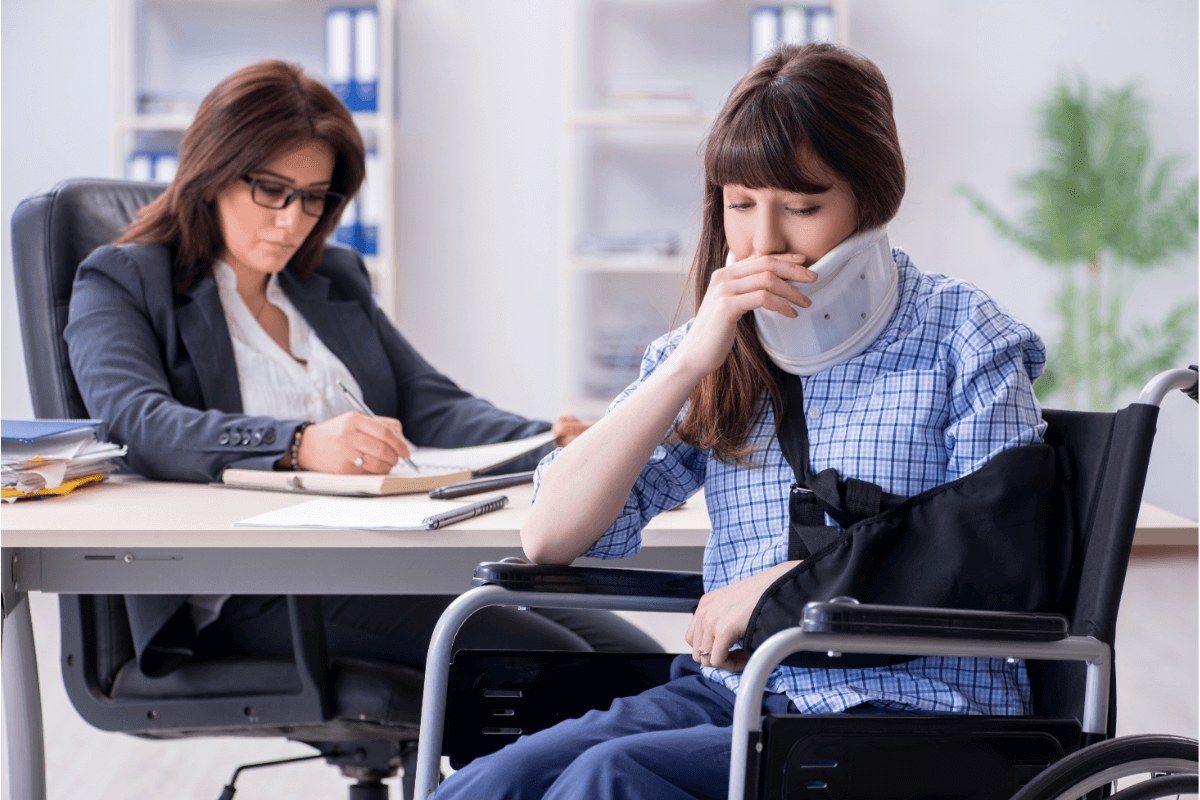
Understanding car accident injuries is not just about the immediate care and recovery process; it’s about advocating for you or your loved ones well-being, knowing your legal options, and taking the preventative measures that can potentially avert future catastrophe. For car accident victims, this knowledge can assist their healing and hunt for justice. This article will discuss the various types of serious injuries that are common in car accident victims.
Types of Car Accident Injuries
There are many different types of car accident injuries, from mild to serious injuries that can become fatal. Generally though, there are two types of car accident injuries:
- Impact Injuries
- Penetrating Injuries
Impact Injuries
Impact injuries occur when a part of the body hits some part of the interior of the car during an accident. This could include hitting the steering wheel, dashboard, or windows. Impact injuries are some of the most common types of injuries in a car accident.
Back Injuries
Back injuries from car accidents are common. The impact of a collision can jolt the body, causing damage to the muscles, ligaments, and vertebrae in the back. The most common types of back injuries include sprains, strains, herniated discs, and fractures. Symptoms range from mild discomfort to severe, debilitating back pain.

Bruising, Lacerations, Muscle Soreness
Some scrapes and general soreness and sprains are to be expected after any car collision because the body was put through stress it was not designed to handle. The sudden force exerted during a collision can stretch muscles, ligaments, and tendons beyond their usual limits, causing strains, sprains, or tears.
These types of injuries require some treatment and usually heal without permanent effects. However, it is still a good idea for accident victims to get medical treatment. Symptoms of soft tissue injuries often include pain, swelling, and limited mobility, but they can also be subtle and may not manifest immediately. As with any injury sustained in a car accident, it’s crucial to seek medical attention to properly diagnose and treat these injuries. An untreated soft tissue injury can lead to chronic pain and long-term physical impairment.
Whiplash
Whiplash injuries are most often seen in rear-end collisions, but can happen in many types of car accidents. Whiplash injuries can also occur even in low speed accidents. A whiplash injury is damage to the soft tissue around the spinal column at the back of the neck. The damage is done when the head is thrown forward rapidly at impact and then subsequently snapped backward rapidly.
The motion resulting in a whiplash injury is often the result of a rear-end or front-end impact. Vehicle speeds at impact affect the severity of a whiplash injury. Most whiplash injuries heal within a few weeks to months without permanent damage.
Broken Bones
The human skeleton was never intended to withstand the force of impact from a car crash. Fractured bones are a frequent car accident injury. Some breaks can be caused by the motion of the body during a crash and others are caused by a crushing force impacting the body.
Broken Ribs and Chest Injuries
The force exerted during vehicle crashes can cause the driver or passengers to be thrown forward, impacting the steering wheel or dashboard, resulting in rib fractures or chest injuries. The ribs, designed to protect vital organs, can break under this immense pressure, which can lead to complications such as punctured lungs or other internal injuries. Chest injuries can also involve bruising or internal bleeding of the heart, particularly in high-impact collisions.
It’s also important to note that seatbelts, while a critical safety measure, can also contribute to chest injuries in a severe crash, although the benefits of wearing one far outweigh the potential risks. In some crashes, wearing a seatbelt improperly leads to a unique car accident injury, referred to as “seatbelt syndrome.” It is characterized by injuries to the abdomen and spine caused by the seatbelt during a crash.
Spinal Injuries
Spinal injuries are one of the most serious car accident injuries even if there are no broken bones. The vertebrae of the spine are separated by discs that act as cushions between them. The force of a car accident can damage the rubbery exterior of a disc, making it bulge or rupture. This can put pressure on the nerves running down the spinal column, causing pain, numbness, and muscle weakness.
Pressure on the spinal cord can result in damage that interferes with motor function. This can cause permanent impairment or loss of use below the point of injury. A spinal cord injury is serious because damaged nerve cells in the spinal cord do not heal or regenerate.
Head and Brain Injuries
Head injuries can happen even if the head does not actually come into contact with anything during an accident. Brain damage may occur as a result of the violent motion the head is subjected to during a crash or other acute event. The brain can be slammed against the inside of the skull, damaging the delicate tissue.
The severity of a brain injury is generally determined by the symptoms experienced after the injury. In mild brain injuries, such as concussions, there is slight damage to brain tissue but it is usually not significant enough to cause a person to lose consciousness. Losing consciousness indicates a moderate to severe brain injury. Extended periods of unconsciousness, such as being in a coma, indicate a severe brain injury.
An injury to the brain may cause it to hemorrhage. Bleeding in the brain can result in significant impairment and even death. Pigments in the blood are toxic to brain cells and cause inflammation and cell death. Brain injuries can cause physical symptoms as well as changes in behavior and perception depending on the extent of the damage.
Penetrating Injuries
Penetrating injuries are typically cuts and scrapes. These can be caused by loose objects. They can range from minor scrapes to serious wounds that require stitches or even surgery.
Internal Injuries
The same force that causes bones to break can also result in other types of internal injuries to softer tissues. A broken bone may cause further injury by penetrating an organ. The body may be crushed in such a way that internal organs become damaged and can bleed. Internal bleeding can become life-threatening very quickly as blood is diverted away from other parts of the body.
Car Accident Fatalities
The most devastating of all car accident injuries, fatalities often occur due to severe trauma to the head, chest, or vital organs. High-speed collisions are particularly deadly, as they can cause catastrophic damage that is beyond immediate medical repair.
Mental Health Injury
Car accident injuries can also include psychological injuries. Financial compensation for psychological injuries would fall under the category of non-economic damages because there is no formula for calculating them. An amount of non-economic damages is based on the experience of the injured person and other personal characteristics.
Under Pennsylvania law, non-economic personal injury damages can be awarded for pain and suffering, embarrassment, and humiliation.
Pain and suffering can include mental anguish, discomfort, inconvenience, and distress.
PTSD From Car Accidents
A study on the psychological impact of car crashes published on PubMed concluded that psychological distress is prevalent after motor vehicle accidents. Depressive moods, anxiety, and phobias about driving were commonly experienced among crash survivors. Up to 40% of those involved in car accidents experienced post-traumatic stress disorder (PTSD).
Understanding Compensation for Car Accident Injuries in Pennsylvania

The experienced personal injury lawyers at SMT Legal understand the complexity of accident law in Pennsylvania and can help you navigate the legal process. It’s important to act quickly as there are time limits car accident victims have to file a personal injury lawsuit in Pennsylvania. Contact the car accident lawyers at SMT today and schedule your free consultation.

